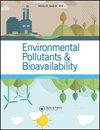多溴联苯醚暴露对大头小蠹虫的影响
Q3 Chemical Engineering
引用次数: 0
摘要
摘要本研究旨在分析不同浓度的二溴二苯醚、四溴二苯醚和十溴二苯醚对大头海螺超氧化物歧化酶和过氧化氢酶活性的影响。采用彗星法测定四溴联苯醚对小鼠DNA的损伤程度。结果表明,不同浓度的这些化合物和不同的暴露时间都能抑制抗氧化酶的活性。二溴二苯醚的抑制效果最好,其次是四溴二苯醚和十溴二苯醚。彗星试验结果表明,高浓度的四溴联苯醚可引起大头田鼠DNA损伤。此外,四溴联苯醚引起的DNA损伤表现出显著的浓度和时间依赖性。本文章由计算机程序翻译,如有差异,请以英文原文为准。
Effect of polybrominated diphenyl ether exposure on Gadus macrocephalus Tilesius
Abstract This study aimed to analyze the changes in the activity of superoxide dismutase and catalase in Gadus macrocephalus Tilesius exposed to different concentrations of dibromodiphenyl ether, tetrabromodiphenyl ether, and decabromodiphenyl ether. Comet assay was used to explore the degree of DNA damage caused by tetrabromodiphenyl ether. The results revealed that different concentrations of these compounds and different exposure times could inhibit the antioxidant enzyme activity. Dibromodiphenyl ether had the highest inhibitory effect, followed by tetrabromodiphenyl ether and decabromodiphenyl ether. The results of the comet assay showed that high concentrations of tetrabromodiphenyl ether can cause DNA damage to G. macrocephalus. Furthermore, the DNA damage caused by tetrabromodiphenyl ether showed a significant concentration- and time-dependent effect.
求助全文
通过发布文献求助,成功后即可免费获取论文全文。
去求助
来源期刊
CiteScore
1.62
自引率
0.00%
发文量
0
审稿时长
1 months
期刊介绍:
Chemical Speciation & Bioavailability ( CS&B) is a scholarly, peer-reviewed forum for insights on the chemical aspects of occurrence, distribution, transport, transformation, transfer, fate, and effects of substances in the environment and biota, and their impacts on the uptake of the substances by living organisms. Substances of interests include both beneficial and toxic ones, especially nutrients, heavy metals, persistent organic pollutants, and emerging contaminants, such as engineered nanomaterials, as well as pharmaceuticals and personal-care products as pollutants. It is the aim of this Journal to develop an international community of experienced colleagues to promote the research, discussion, review, and spread of information on chemical speciation and bioavailability, which is a topic of interest to researchers in many disciplines, including environmental, chemical, biological, food, medical, toxicology, and health sciences.
Key themes in the scope of the Journal include, but are not limited to, the following “6Ms”:
Methods for speciation analysis and the evaluation of bioavailability, especially the development, validation, and application of novel methods and techniques.
Media that sustain the processes of release, distribution, transformation, and transfer of chemical speciation; of particular interest are emerging contaminants, such as engineered nanomaterials, pharmaceuticals, and personal-care products.
Mobility of substance species in environment and biota, either spatially or temporally.
Matters that influence the chemical speciation and bioavailability, mainly environmentally relevant conditions.
Mechanisms that govern the transport, transformation, transfer, and fate of chemical speciation in the environment, and the biouptake of substances.
Models for the simulation of chemical speciation and bioavailability, and for the prediction of toxicity.
Chemical Speciation & Bioavailability is a fully open access journal. This means all submitted articles will, if accepted, be available for anyone to read, anywhere, at any time. immediately on publication. There are no charges for submission to this journal.

 求助内容:
求助内容: 应助结果提醒方式:
应助结果提醒方式:


